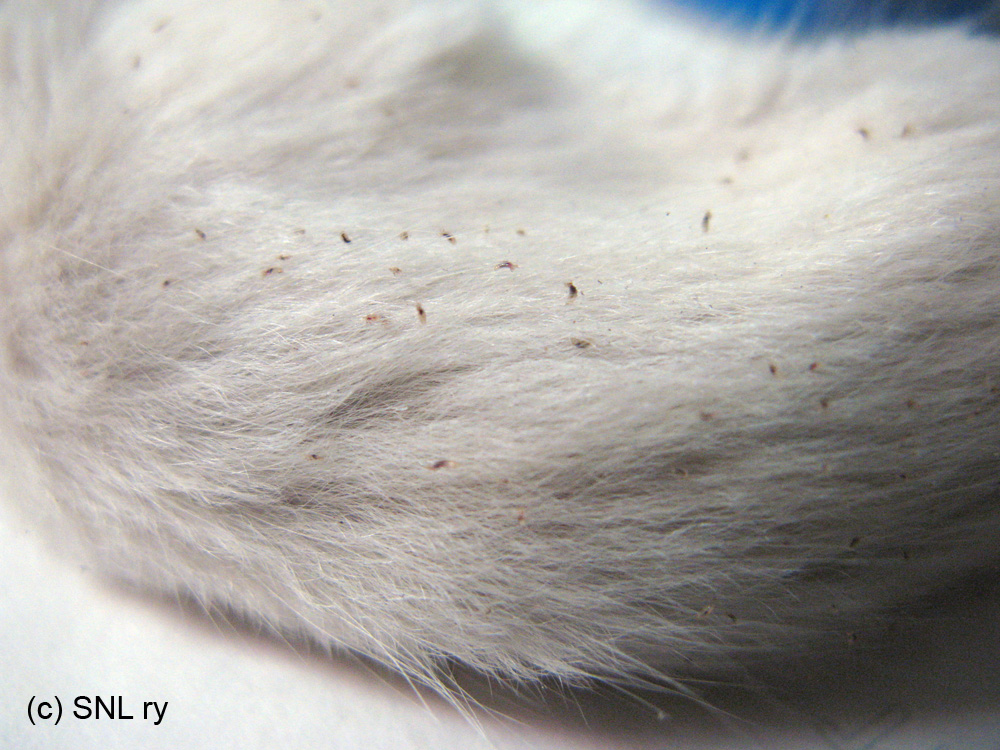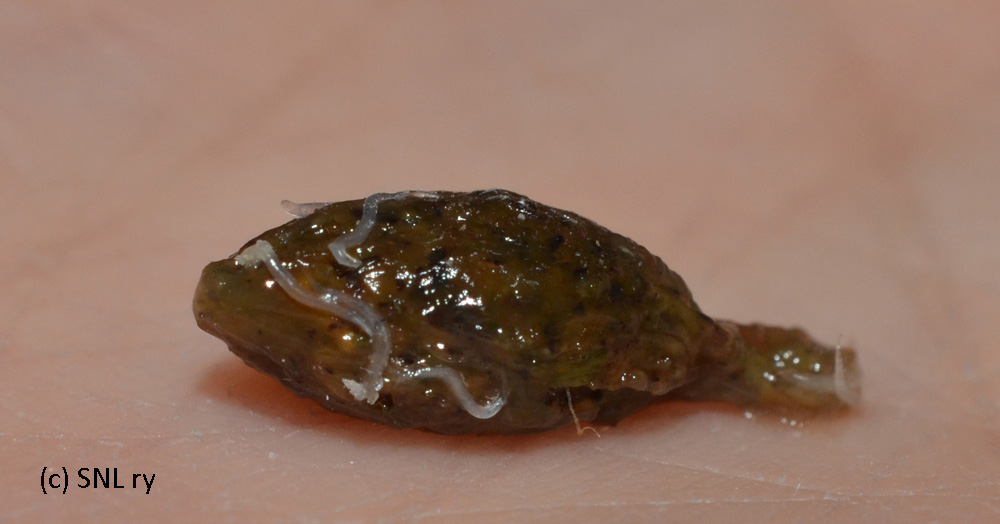Help! My Mice Have Lice!
Text: Anniina Tuura, translation: Satu Karhumaa
On Ectoparasites, Endoparasites and How to Get Rid of Them Effectively
It may come as a surprise to mouse owners, that their beloved pets have unwanted tenants. Often, these parasites - unnoticed by the owner - are found at shows by the judge. However, there's no need to panic. Parasites are usually quite easy to get rid of, with the right treatment.
You aren't always able to tell the presence of parasites by the condition of the mouse's coat or by it being thin. Even mice with no outward signs of an infection, can carry ectoparasites, endoparasites or both. As a matter of fact some parasites are almost a norm: many a mouse has some fur mites on their skin without them causing it any trouble, or carries some species of worms. Endoparasites can be kept in check my regular dewormings, endoparasites can be treated once you notice them.
Being able to actually see parasites with plain eye tells you there's already a downright infestation of them. Endoparasites can easily go unnoticed as long as their population is small. Once you can see worms in the mouse's droppings, the population has already grown large. Finding parasites isn't a sign of bad mouse care. So, there's no reason to panic or the be ashamed, if a judge finds them. It's better to ask advice on treatment, if advice hasn't been already written down on the judgement sheet.
Once Parasites Have Been Found
If one mouse has parasites, it's more than likely there are other infested mice in your mousery. Therefore treatment should be administered to the whole population, or at least to those mice in direct contact with the one found infected. The one exception seems to be fur mites, which can grow into a larger population in just one mouse out of a group. It's important to remember that parasites can be transmitted quite easily, so one should never sell or show mice known to have parasites.
There presciption and over-the-counter treatments available for treating mice with parasite infestations. Sadly, not all vets recognize mouse parasites, nor are able to prescribe drugs that actually work or in working dosages. Therefore, mouse fanciers should read up on the subject and ask long time fanciers for advice, as many a fancier has had years to figure out what works and what doesn't, by trial, error & success. The following is written by a fancier - not a vet - and is based on study and practice.
(Translator's note: As need for prescription and names of drugs vary greatly according to location, information on treatments have been cut down to basics. Contact your local mouse club & vets for what's available in your area.)
Endoparasites
Most common endoparasites (parasites that live on the outside of the animal) are lice (polyplax serrata) and mites (Myocoptes musculinbus, Myobia musculi, Radfornia affinis). These are very easy to get rid of by using the right kind of medication. Poultry mites (red mite, Dermanyssus gallinae) are - luckily - rarer. Poultry mites are harder to get rid of, but it's not impossible either.
Mouse lice are ohlong, dark, slightly under 1 mm in lenght and most often seen at the neck of a mouse. Common symptom is scars and thinned fur in this area. Lice can be eliminated by a number of over-the-counter mecations. Mites can be transferred between rats and mice, but not to other animals.

|
|
This poor mouse has a huge louse infection. |
Fur mites are harder to spot if you don't know what to look for, as they are tiny. They live just on the surface of the skin. They are just about 0,5 mm in size, light or transparent in colour. They are most easily seen as "dust" on the mouse's skin (if there are plenty of them). Mite eggs are easier to spot and can be found at the base of he hair and are most common in the neck, cheeks, around the eyes and throat. Plucking a few hairs and looking at them in good light might show you mite eggs in the hair base. When a mouse dies, mites will migrate to the tops of the hairs and can be seen as white spots there.

|
Worms. |
__
Mice (and rats) have sometimes "unwanted tenants" in their coat.This is usually a louse, which can be seen with plain eyes. It usually dwells behind the ears and in the neck or in the armpits - in the places a mouse cannot reach itself. Take the mouse in your hand and (in good light) look at the hair roots and the skin. In light coloured mice the lice show as very small dark spots. If you look very closely, you can see these spots moving around. Lice are transmitted from one mouse to another if they are housed together, so if one mouse in a cage has lice you should treat its cagemates, too. Lice can also get transmitted through human hands. It reproduces by laying eggs in the mouse's hair. Mouse lice do not get transmitted into humans.
Information on louse treatment can be obtained from vets or very good pet shops. Ivermectin is good and reliable, but do check the correct dosage from your local vet or club.
Endoparasites
Sometimes mice get endoparasites, which can be fatal if not treated. As with many ailments, in this case prevention is the best cure. This is, a mouse should be wormed regularly. Mice can get worms from other mice or from food collected from outside (always wash carefully all grasses etc. collected from the nature) or from dirty conditions (always remove fresh food no later than the next day).
If a mouse has worms, the symptoms are quite easy to detect; the coat becomes coarse and dull, and the mouse loses weight even if it eats properly. You should worm your mice twice a year. Information on how to do that, as well as the right medicines can be obtained from a vet. Always consult a vet before de-worming a pregnant doe. Does should be wormed before mating them.
